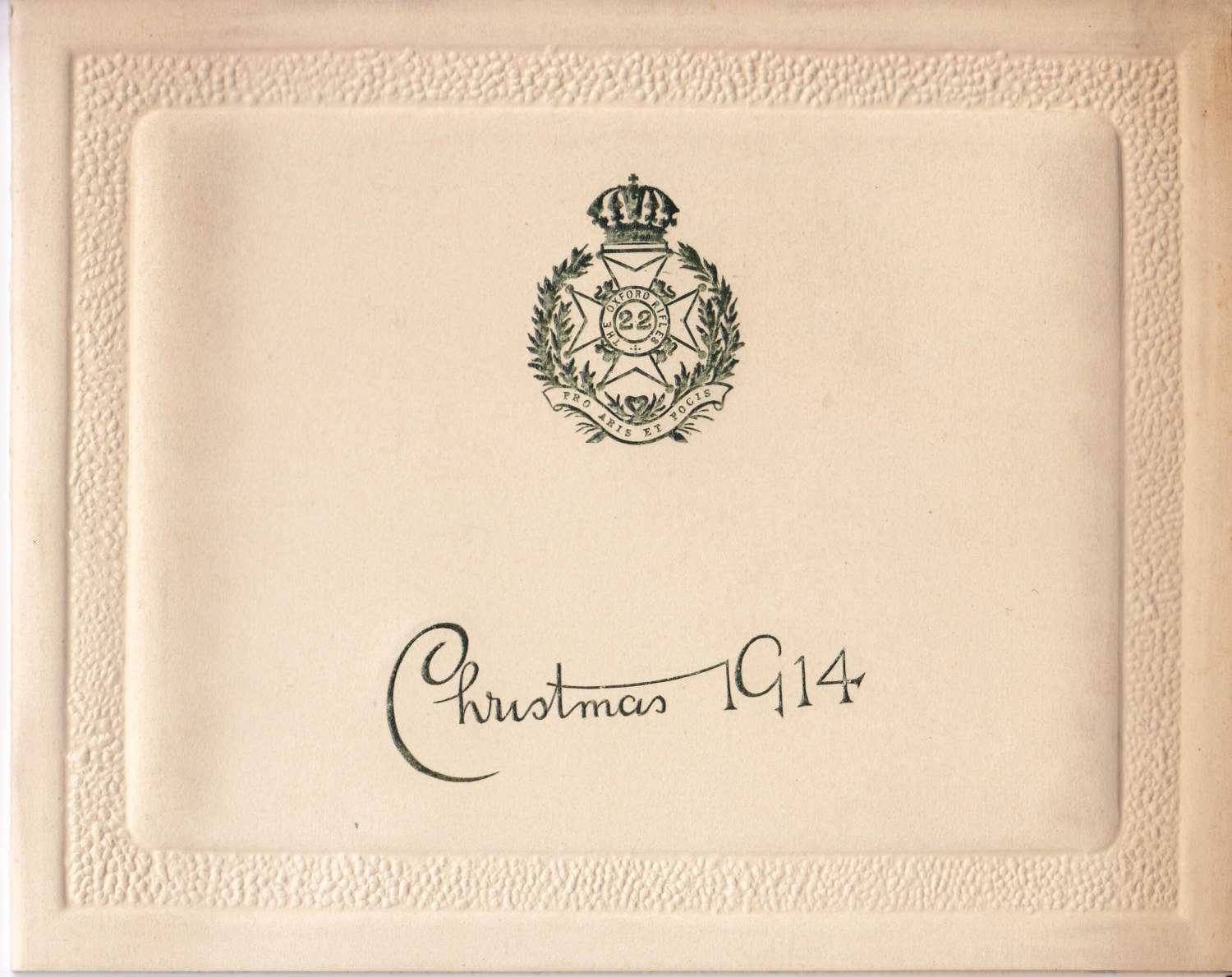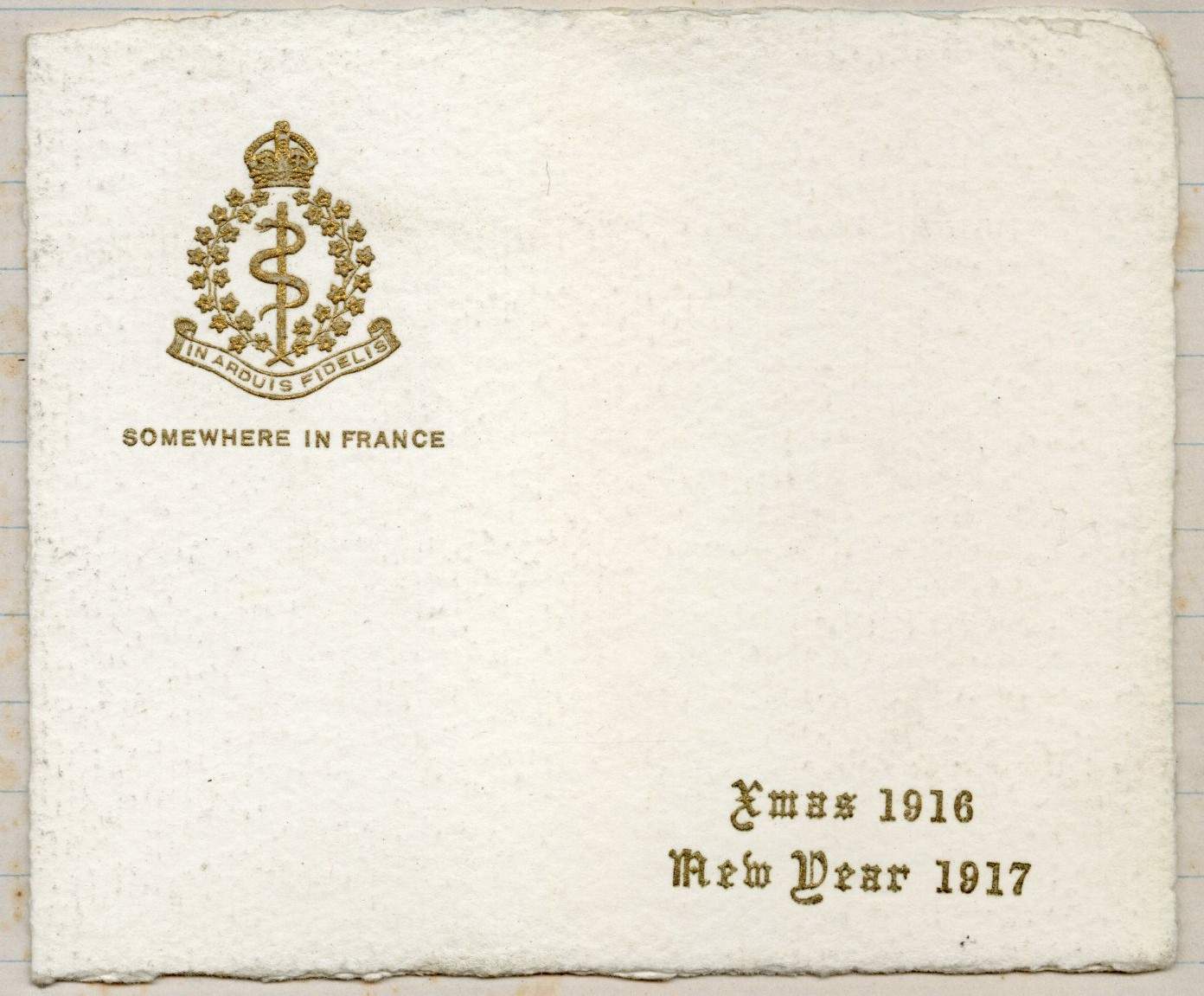WWI Christmas and the Role of Plum Pudding
WWI Christmas and the Role of Plum Pudding
Taking a look at the importance of the Christmas Pudding tradition during the First World War.
By Liz Dommasch, Archivist
Those who lived through the First World War experienced Christmas in various ways. For those serving overseas, Christmas Eve and Christmas day ranged in meaning and activities depending on where a soldier was stationed. For many directly on the front lines, it was just another day, while for those farther back from the fighting, it was a chance to enjoy a quiet meal and maybe celebrate with those around them singing Christmas carols and playing football. Those stationed in England, often times enjoyed mass followed by a larger Christmas meal and holiday entertainment. Families on the home front focused on maintaining annual Christmas traditions and yuletide spirits, especially for the sake of the children, while dealing with rationing. For all; loved ones were sorely missed, with the hopes that the war would soon be over.

Oxford Rifles Christmas Card – 1914. Courtesy of Stephen Smith.
Many families and community organizations, such as the Red Cross and local women's groups, sent Christmas boxes containing writing paper, socks, tobacco, and edible treats for loved ones and their comrades in the trenches. Soldiers’ correspondence in December and January of each year is full of grateful recognition of the time and money spent in preparing these parcels, as well as commenting on the types of items included. For many, the food contributions were what they looked forward to receiving. For those in the trenches, often without access to food beyond their army rations, this must have been an enormous comfort as well as an important link with home and family traditions.

“Somewhere in France” Christmas card – 1916-1916. COA52 Oxford Rifles fonds
One such item that seems to be included in every parcel sent overseas was the beloved plum pudding. From the middle ages until the Great War, roast beef and plum pudding were the British celebratory foods of choice for all sorts of festive occasions, but especially Christmas. In fact, by the first half of the nineteenth century, the dessert started to be referred to as Christmas pudding. During the First World War, plum pudding took on a new patriotic role as a symbol of solidarity throughout the British Empire. For example, on December 24, 1915, the Woodstock Daily Sentinel-Review reported that three million pounds of plum pudding were to be delivered to every man in service, on land or sea, to enjoy on Christmas Day. In December of the following year, the residents of Ingersoll raised $450 to send to Capt. Macleod to purchase Christmas cake, plum puddings, etc. for Christmas cheer for the Ingersoll men of “B” Company of the 168th Battalion (Oxford’s Own).

British soldiers unpack parcels from home during the First World War in the painting “Christmas at the Front" by Italian illustrator Fortunino Matania. https://legionmagazine.com/en/merry-christmas-to-all-and-to-all-a-good-fight/
In January 1917, Gunner W.R. Crawford, of Winnett Street, Woodstock sent the following letter home outlining the festive Christmas meal they enjoyed at Shorncliffe Camp, England, with the 1st Reserve Battalion, C.F.A.:
After having a very pleasant Christmas, I thought I would send you the menu card, and you could let the Oxford people know through the press that at least some of the boys did not miss their Christmas turkey and plum pudding. Being in the artillery, I do not know how the boys of the 168th fared but presume, from the layout around Shorncliffe, that no one missed very much.
I will give you a little detail about our Christmas dinner. We were lined up as usual in two ranks and then marched to the mess room, where, upon being seated, the trumpeters played “Plum Pudding” a very pretty Christmas dinner call: then we had a visit from the Colonel and officers of the batter, with their wives and lady friends. Then followed toasts to the “The King”, “The Colonel”, “The Captain”, “The Ladies”, “The Sergeant-Major”, and last, but not least “To our Mothers and Wives, Sisters and Sweethearts, Fathers and Brothers At Home” and also one to “Canada”. Then the band played and the eatables disappeared.
After dinner, there was a concert held in the recreation room, and everybody enjoyed himself and had a very merry Christmas, indeed.
Wishing you a prosperous New Year, I remain
Yours truly,
H.R. Crawford
Late of Bell Telephone Co.
The Menu
Mixed Pickles
Roasts
Roast Young Turkey and Apple Sauce
Roast Goose and Cranberry Sauce
Roast Prime Ribs of Beef au jus
Vegetables
Mashed Potatoes, Boiled Potatoes, Buttered Parsnips, and Sugared Beet
Desserts
Christmas Plum Pudding, Hard and Brandy Sauce
Fruits in Season
Nuts and Raisins
English Ales
Tobacco and cigarettes
For those that aren’t familiar with plum pudding, it is a steamed or boiled dried-fruit pudding with a consistency more like cake, rather than that of say, Jello pudding. The word “plum” had been used for what we would now call “raisin” since the 18th century, and the pudding does not in fact contain plums in the modern sense of the word. Many households have their own recipes for Christmas pudding, some handed down through families for generations. However, essentially the recipe brings together what traditionally was considered expensive or luxurious ingredients such as spices and candied fruit. The following recipes appeared in the Woodstock Cookbook published by the Women of St. Mary’s Church in 1917 and show a variety of ingredients:
Plum Pudding – (Delicious) – 6 eggs, 1 tablespoon salt, 1 pound coffee sugar, 2 pounds raisins, and ½ pound currants (floured), 1 ½ pounds suet (chopped fine), 1 ¼ pounds bread crumbs, ½ pound peel, 2 nutmegs, 1 dessertspoon mace, 1 pink milk, 1 wine glass brandy, ½ cup molasses, a few almonds chopped rather fine. Mix well together, let stand overnight, use no flour except what is on currants and raisins, but if too thin next morning add more bread crumbs. Mix well, grease bowls, cover with a paste of flour and water, tie cloth on top and boil for 5 or 6 hours. If not used at once, steam for 1 or 2 hours when wanted. – Mrs. J.G. Wallace.
Christmas Pudding – 1 pounds raisins, 1 pound currants, 1 pound yellow sugar, ¾ pound suet, ¾ pounds bread crumbs grated fine, 1 cup flour, 8 bitter almonds chopped fine, 8 ounces candied lemon, citron, and orange peel cut fine, juice and grated rind of 1 lemon, 8 eggs and a wine glass of Brandy (not necessary). Steam for several hours. – Mrs. F. Millman.
